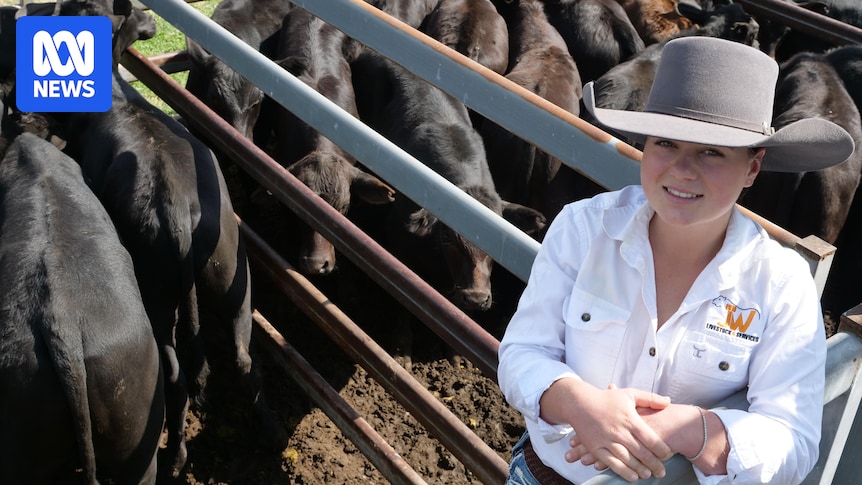
More Australian farmers will soon have the opportunity to brand their beef as Angus for export, following a significant change in meat definitions. Previously, beef needed to come from cattle with at least 75 percent Angus genetics to qualify for the brand when sent overseas. However, the industry has agreed to lower this requirement to 50 percent, creating new opportunities, particularly for northern and dairy cattle producers.
While this change is unlikely to impact Australian consumers directly, it could help address significant challenges within the livestock industry, offering a potential boost to the export market.
Defining Angus Beef
The definition of what qualifies as Angus beef is set by AUS-MEAT, an industry-owned not-for-profit organization that provides auditing and certification standards across the supply chain. Its language and standards committee includes representatives from the beef, lamb, and pork industries, as well as the government, processing, and retail sectors. This committee controls trade descriptions, ensuring that terms like “grass-fed,” “sirloin,” or “Angus” have standardized meanings for exporters and their customers.
According to AUS-MEAT Limited chairman Allan Bloxsom, the new framework for Angus beef was developed following interest from a major meat exporter. “This has been a long time in the making because we worked through 50 percent breed content standards for both Wagyu and Herefords quite some time ago,” he said. “Whenever an exporter wants to make a claim on a product that’s exported out of the country, they have to have a quality assurance program in place.”
“[It ensures] that the product meets the requirements or the statements made,” Bloxsom added.
The framework applies only to exports and is aimed at the US market, where a 50 percent Angus beef grade already exists. While the standards often influence the domestic market, Bloxsom noted that higher grades would continue to be available both domestically and internationally.
Consumer Quality and Market Impact
Angus Australia, which represents cattle breeders and runs its own branding and verification programs, does not anticipate significant changes for Australian consumers. Chief Executive Scott Wright explained that the breed is globally recognized for its high marbling and meat quality, making it attractive for processors looking to capitalize on its popularity.
“We get great premiums for Angus products overseas, so they’d be looking to label appropriate to whichever market they’re going to,” Wright said. “I think that does flow through our domestic market.”
Despite the introduction of a 50 percent grade, Wright believes domestic consumers will continue to prefer higher grades. “Australians, when they’re eating out or buying in a retail environment, they want the best quality product they can get,” he noted. “I just can’t see the demand for a 50 percent product domestically.”
Opportunities for Northern Producers
Angus Australia estimates that more than half of the nation’s cattle herd has been influenced by Angus genetics. However, its Scottish heritage makes the breed less suited to the north, where the majority of Australia’s beef herd is produced. In these regions, Brahman cattle are dominant due to their tick and heat resistance.
Producers like Margot Fordyce, who operates in Queensland, have opted to mix Angus with Brahman to create Brangus or Ultrablack crossbreeds that combine heat resistance with high meat quality. Fordyce’s family has invested in Angus bulls for their 3,000-head herd but maintains a balance due to the tough conditions.
“Because we live north of the Tropic of Capricorn, we have to walk that very fine line of keeping some Brahman content for the dry times and for the hot days,” Fordyce explained.
Fordyce believes the new framework could increase the value of her herd without necessitating changes to her operation or breeding program. “The more income we can make, the better it is for our family and the better opportunity it might give us down the track to expand,” she said.
Red meat analyst Simon Quilty expects crossbred cattle to fetch higher prices once the new framework is implemented. “That is what’s so exciting for a Queensland operator, is the access into that Angus market which was once the privilege of those in the south,” he said.
Implications for the Dairy Industry
The change in Angus beef definitions could also benefit the dairy industry by raising the value of crossbred Angus cattle. Dairy Australia estimates that one million calves are born each year to maintain milk production, with almost 60 percent considered “surplus” to industry needs. These calves often have little market value and are slaughtered within a month of birth or euthanized on farms, a practice the industry aims to eliminate by 2035.
Animal health and welfare policy lead Louise Sundermann highlighted the potential benefits of increased interest and value for beef from the dairy industry. “Anything that will help increase the interest and the value of beef from the dairy industry is great,” she said.
“When the price is good, the number of bobby calves slaughtered goes down,” Sundermann added.
Bloxsom noted that similar developments have occurred overseas. “In the United States, that particular part of the business has been growing very rapidly,” he said. “I can see the same opportunities here.”
As the new framework is poised for implementation, Australian cattle producers are optimistic about the potential benefits, both for their operations and the broader industry. With the promise of increased market access and higher prices, the change represents a significant opportunity for growth and sustainability.







